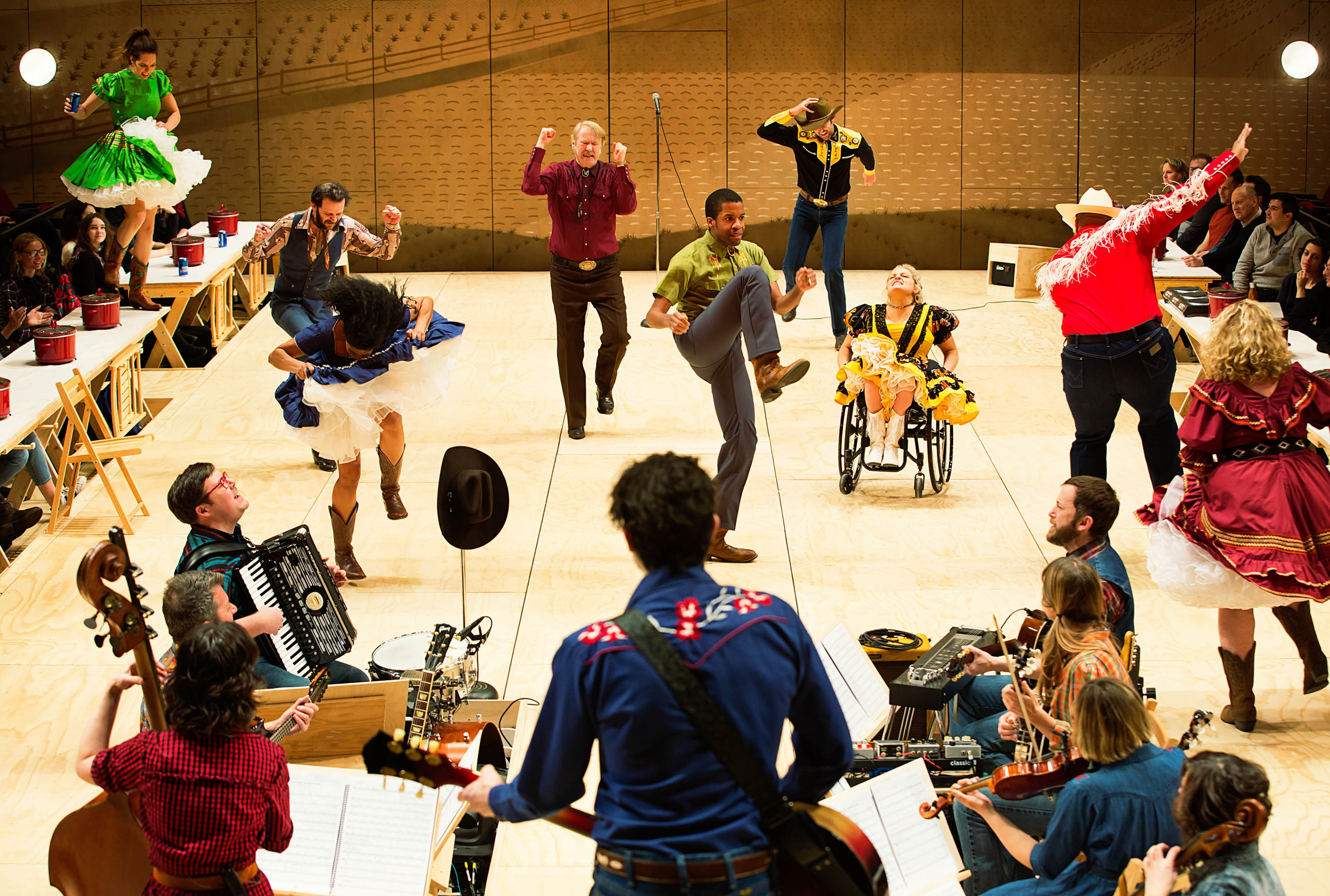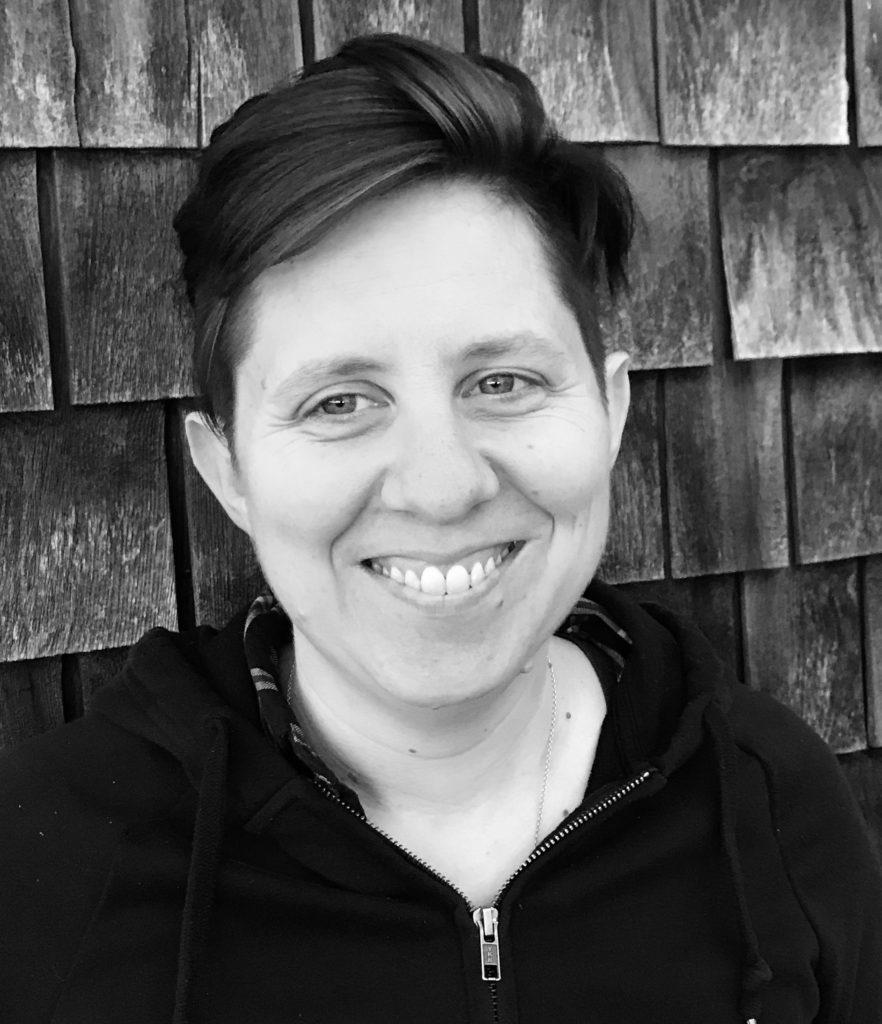If you take a look at Laura Jellinek’s current list of projects, you’ll wonder how she does it all. The Tony Award and Drama Desk nominee recently designed the sets for Broadway’s “Oklahoma!,” “Sea Wall/A Life,” which is transferring to Broadway this summer from the Public Theater, and “Do You Feel Anger.”
The latest reimagining of Rodgers & Hammerstein’s “Oklahoma!” was developed at Bard and is currently playing at Circle in the Square Theatre following a sold-out 2018 engagement at St. Ann’s Warehouse. “Sea Wall/A Life” will begin its Broadway run at Hudson Theatre July 26.
Women and Hollywood talked to Jellinek about “Oklahoma!,” receiving a Tony nomination for her work, and how the production’s set design changed from theater to theater.
This interview has been condensed and edited.
W&H: Congratulations on your Tony nomination. How does it feel and what does it mean in terms of your career?
LJ: It feels crazy and exciting and all of those things, but I don’t know what it means yet. I’d say that so far the best thing is that a lot of people whom I care about have called me in the past week. My mom is also super excited and that’s lovely, too. The bigger thing is that I’m really proud of the show, and it probably means it will last longer and that feels great.
W&H: Can you please talk a bit about your background and how you got into theater set design?
LJ: I grew up in a fancy suburb of Philadelphia in Lower Merion [Township]. The theater department at my high school was great. It was very backstage-focused so I designed sets and costumes. Then in college, I wasn’t really sure if I was going to keep doing theater but I fell in with the set designer there by accident because I was doing work-study on the props team. After college, I moved to NYC where I worked in arts administration, then as a carpenter, and eventually applied to grad school [in NY], which is when set design [as a profession] became official.
W&H: What’s it like being a woman in set design today?
LJ: It’s getting a lot better but you can still feel the difference. The leap for women to get to Broadway from Off-Broadway is really big. It’s hard to pinpoint an exact reason.
W&H: Let’s talk about “Oklahoma!” Were you a fan of the show growing up?
LJ: Not really, but I wasn’t exactly anti-musical. I saw “Rent” in high school, but I had never seen “Oklahoma!” until Daniel [Fish, director of “Oklahoma!”] asked me about it, so I watched the old film and realized I knew basically all the songs. I worked on the production at Bard, three versions ago.
I joke with some of the other designers that I don’t know how else to do “Oklahoma!” It seems straight-forward to me and this is the only way to do it.
W&H: What has the collaboration process been like for you in terms of making decisions about stage design?
LJ: What’s interesting and cool on this process is that Daniel started all of this. The kernel of this production was what he did with his students at Bard around 12 years ago. I wasn’t there; there are three people still with us who were with him then. It was really his vision. We knew that people like to eat chili [which is given out to audience members during intermission]. Daniel had that idea when we were all in a room together. The car dealership fringe [which is hanging from the theater’s ceiling above audience members] is the one remaining element from that early production on the set.

The cast of “Oklahoma!” on Broadway: Little Fang Photo
W&H: How do you compare the physical stages from Bard to St. Ann’s to Circle in the Square?
LJ: Whenever we move the show, the audience doubles. It’s always a question of how to increase the audience by two and still have it be the same show, but not the same show, which is a never-ending project.
The seating at St. Ann’s was half the number of the audience but the stage was bigger than the stage at Circle. Weirdly, I feel like Circle is the best things from Bard and the best things from St. Ann’s mashed together into this new thing. The new theater is an in-between where you have the energy that comes with that many people being packed into no expanse. But also it scaled up, and I think it has gotten better with the actors and all the work we have put into it.
W&H: Describe how you want audience members to feel when they walk into the theater.
LJ: Ultimately, an audience member walks in and knows we are all in this together. The mural is like the ghost of an old landscape which might be an old “Oklahoma!” backdrop anywhere, used in any production. But it’s sort of transparent. The guns [hanging on the walls] are way more than you want to see in a room. The fringe above is a pop of joy and color. The show does all those things. It’s an old musical. It is really dark. Someone is going to die. There’s murder. But there are also moments of joy, which are sparkly. Everything is all mixed together.
W&H: What inspired your set design choices between the first and second act?
LJ: In the first act, we have the crock pots with the chili on the stage. They’re on a warm setting. It was important from a logistical standpoint. It would have been easier if we had just brought in chili because New York has stricter health rules than upstate, but it’s important that there’s real chili and everyone in the theater is going to eat together on the stage during intermission, and that it’s real food. On the stage, there are tables where the actors sit near the audience. The corn props started out as a visual filling things out, but we figured out that for many a new day the women cleaning and breaking it is a real thing. There’s more stuff lying around in Act I.
In Act II, the stage is totally clear; there are no tables and no band. The dream ballet with the dancer is a woman alone on the stage which feels really important in contrast to the rest of the show.
W&H: The whole cast is incredible, but Ali Stroker is particularly memorable as Ado Annie. How strategic were you planning-wise with her wheelchair moving around throughout the play on and off the stage?
LJ: At St. Ann’s, we had already basically figured it out when she got cast. Daniel called and told us about casting her, and we had almost finished designing [the stage]. The audience entered through a big garage door so everything was already accessible.
Circle in the Square was very hard. When we went to the theater to see how it worked, Ali couldn’t even come to the first site visit because we couldn’t get her to stage level. They had to outfit the theater for her. The whole concept of the show is that the cast is a community of people that travels together and that element has remained important.
W&H: Can you talk about some of your other female collaborators on the show?
LJ: [Costume designer] Terese Wadden has been with us since Bard. She has been an integral part of figuring out how the show worked from the beginning. When Eva [Price, producer] came on, that was great. At St. Ann’s, Susan Feldman was really involved, too.
There’s a scene in Act II where the characters Laurey and Jud are alone after the auction. It’s what we call the “sexual assault scene,” which is now lit by Christmas lights. At St. Ann’s we hadn’t come up with that lighting idea yet. [The scene] was in the pitch dark like in the smokehouse and an audience member responded very viscerally. It was good to have Eva and Susan in that conversation, to have a group of women to figure it out.
W&H: What advice do you have for aspiring female set designers?
LJ: It’s tricky. I have kids, two sons ages three and six. When we’re in tech, I’m doing 12-hour days for a few weeks. I’m not there every night. There are plenty of days I am around, but it’s a struggle. When I’m in tech, I disappear from the household.
Jane Cox [a theater lighting designer] once told me that if you want to do this job and have kids, you have to find a partner who makes more money and is okay that your career matters more. It’s really hard. If you look at the list of people who can do this with kids, they either have help or move. Most set designers I know have to leave New York because it’s unaffordable.
W&H: What are you working on next?
LJ: “Sea Wall/A Life” is moving to Broadway. I will also have a Lynn Nottage play at the Guthrie Theater going on at the same time called “Floyd’s,” directed by Kate Whoriskey, which is like a companion piece to “Sweat” [Nottage’s Pulitzer Prize-winning play].







